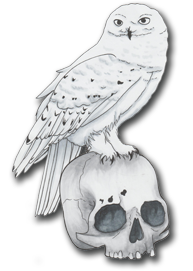A Brief Timeline of Tooling Leather
The first use of Hand Tooled Leather is lost in history, but preserved leather items have been unearthed from 3,000-year-old Egyptian tombs and are mentioned in the Bible and ancient literature. Hand tooled leather has been highly valued in most civilizations.
Early Tooling
Legend maintains that Spanish Moors decorated their homes with hand-carved leather, probably the first recorded use of tooled leather. These decorations were a variation of wallpaper, thought to display various patterns, family names, crests or coat of arms as mentioned in the book "Historical Carvings in Leather."
Middle Ages
Among the first guilds established during medieval times, leather workers eventually controlled eleven of the 111 recognized trades in London. In France, Charles the Sage established the Fraternity of Leather Workers in 1397. In England, the Saddlers and Skinners Guild built its guild hall in 1422. Richard Hukluyt, an English leather dyer, researched the Persian art of carving flowers into leather in 1579.
Central America
During the time of the Aztecs, artisans tooled leather items as well as carved similar patterns in stone. Maddox states that they probably performed "set stamp work," in which the leatherworker first carves a design into an instrument and then hammers the instrument - transferring the design - into the leather with a wooden mallet. Many modern raised-flower designs can be traced back to Aztec patterns.
Through the Early 1900s
Leather tooling became popular among cowboys and ranchers of the "Wild West" for its ornamentation and expression of personal style. Elaborately tooled saddles helped express pride in their owners' horsemanship and identified individual possessions among cowboys with no horses of their own. Chaps - especially bat wing chaps, with wide wings buckled to the leg only at the knee - provided large surface areas for tooling, overlays and inlayed leather patterns. Cuffs, originally created to protect shirt sleeves and wrists from harm, became a fashion statement when worn by rodeo riders.
Leather
Because of its thickness and quality of fibers, crafters of leather tooling use only tanned cattle hides. These hides may be split - or cut horizontally - several times, producing more useable leather for a variety of commercial uses. Leather tooling crafters also use only full-grain leather, which has had the hair removed but retains its grain or epidermis. They require the finest leather, which covers the choicest beef cuts.
Tanning
Tanning leather removes its hair; increases its strength, softness and pliability; and helps make it waterproof. Although several tanning processes exist, leather to be used for tooling must be tanned using vegetable materials such as bark, leaves, nuts and woods containing tannin. Examples of these materials include hemlock, oak, chestnut and quebracho or the iron tree. Traditionally originated by the Biblical Hebrews, historic vegetable tanning took up to two years to prepare a thick cowhide.
Dying
Throughout history, crafters used dyes to accent their tooled leather. Before the mid-1800s, they created all dyes from vegetable matter; since that time they have used products produced by coal-tar or petroleum. The porous nature of leather allows the dyes to soak into the grain and retain their color for many years.
Then Versus Now
Tools of the modern era differ from period items that have been discovered through archaeology somewhat, but it is surprising to me how little
things have changed. We use a more dense alloy when pouring or forging materials, instead of working in iron, but the shapes and varieties
of tools have not really changed all that much. Plastics are in use for the tools of today as well, where in the past a piece of whale bone or horn may have been polished down and utilized.
Technique and style has changed itself here and there, not unlike the shifts in other artistic styles through the years, but the underlying form and technique of basic application stays the same. Carving and pounding, hardening and any other technique done in period can be found in the work of artisans today, and different techniques that utilize natural methods in place of synthetics are still used.
Perhaps the most surprising discovery in my research is that the dyes of the past were also petroleum based, as were vegetable matter tanning methods. Of course, methods of the past may have taken significantly longer to accomplish, but they used the same core material. In the end, the only difference between tooling then versus now is the artist themselves.
Constructive feedback is both welcome and appreciated, please let me know if I missed some pertinent information or if there's somewhere I can improve.
As always, thanks for reading!
Ihone
